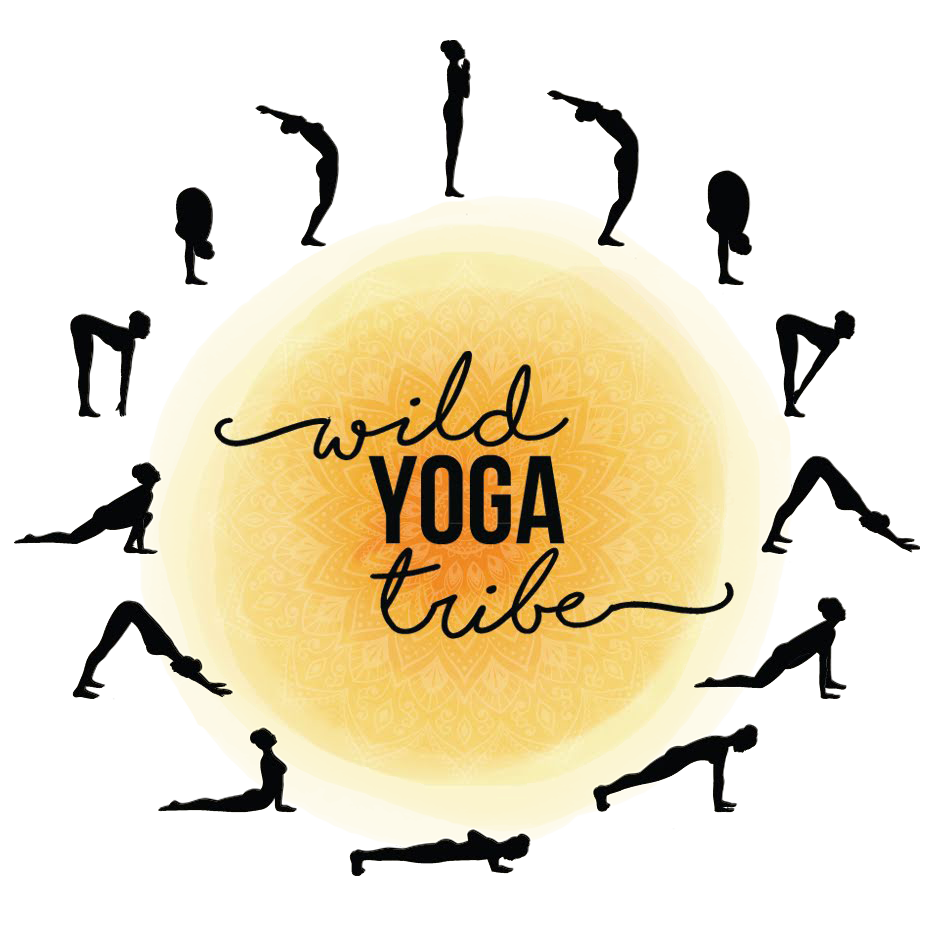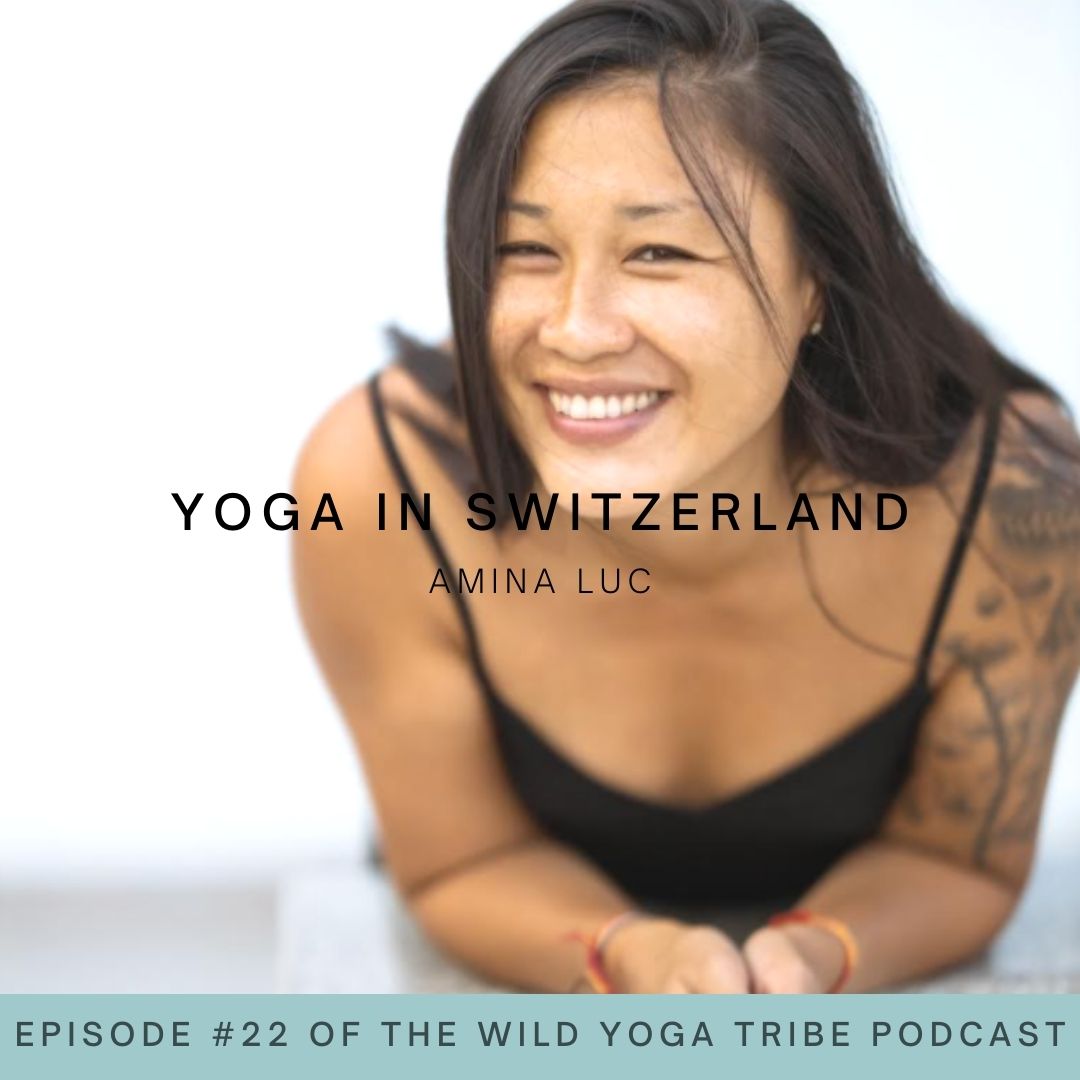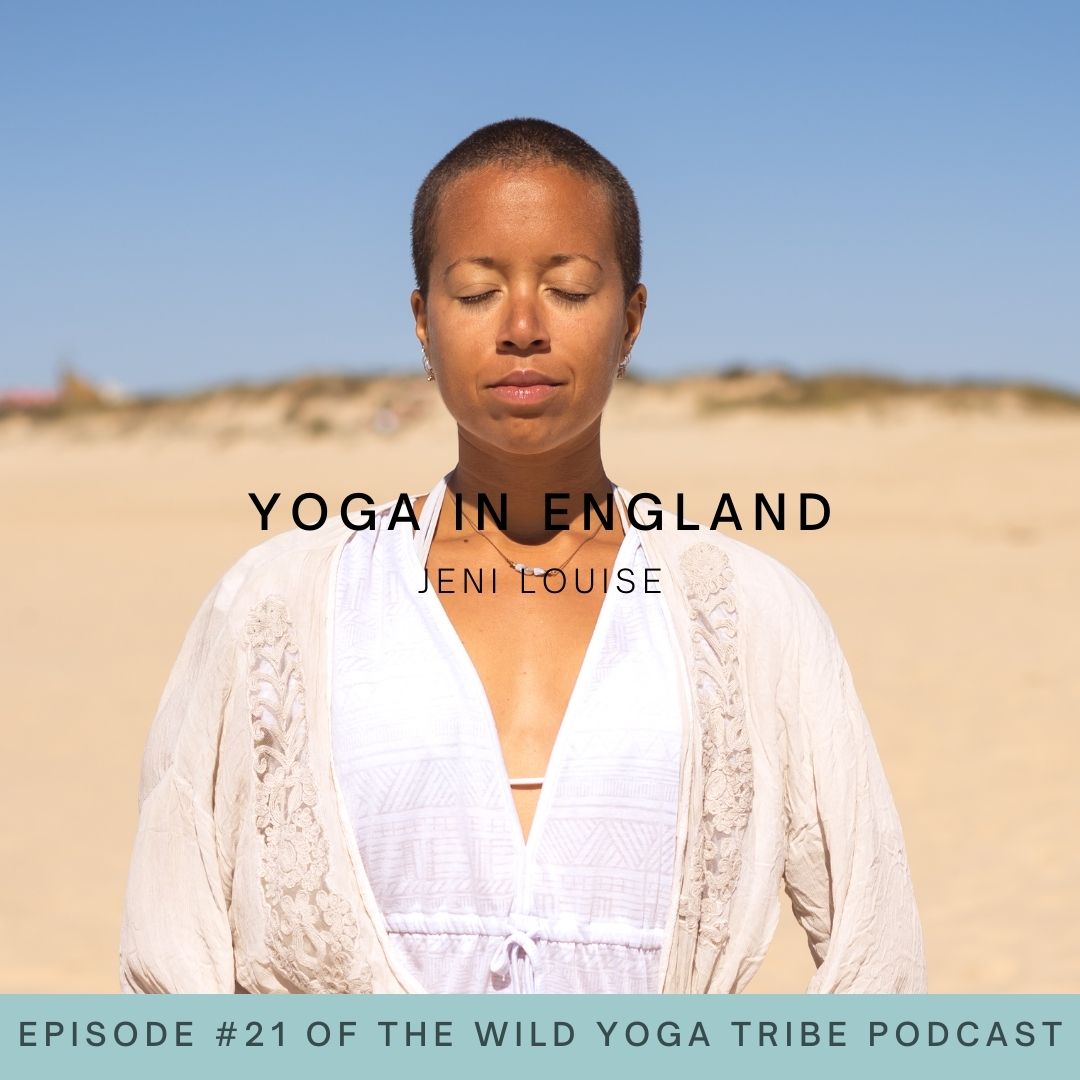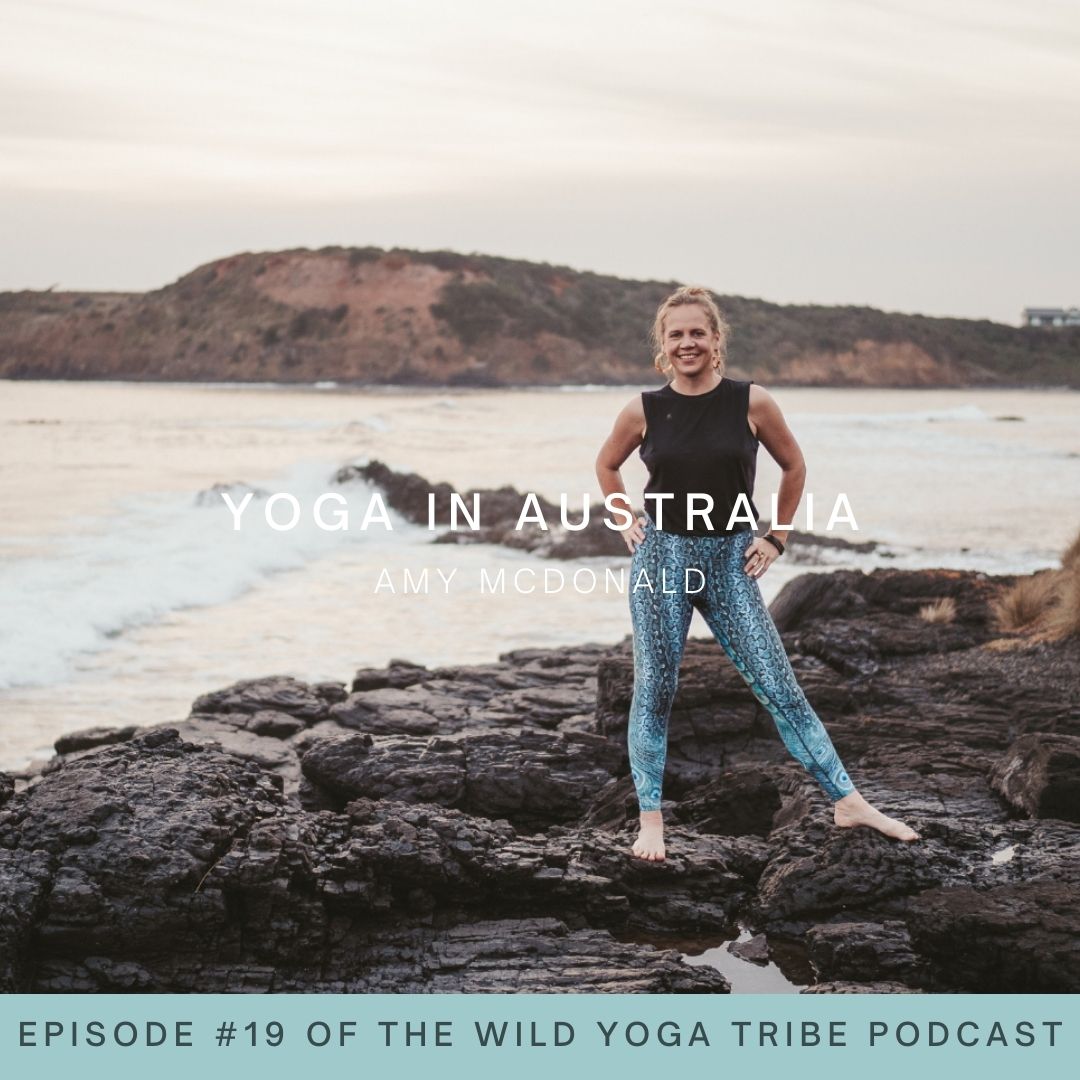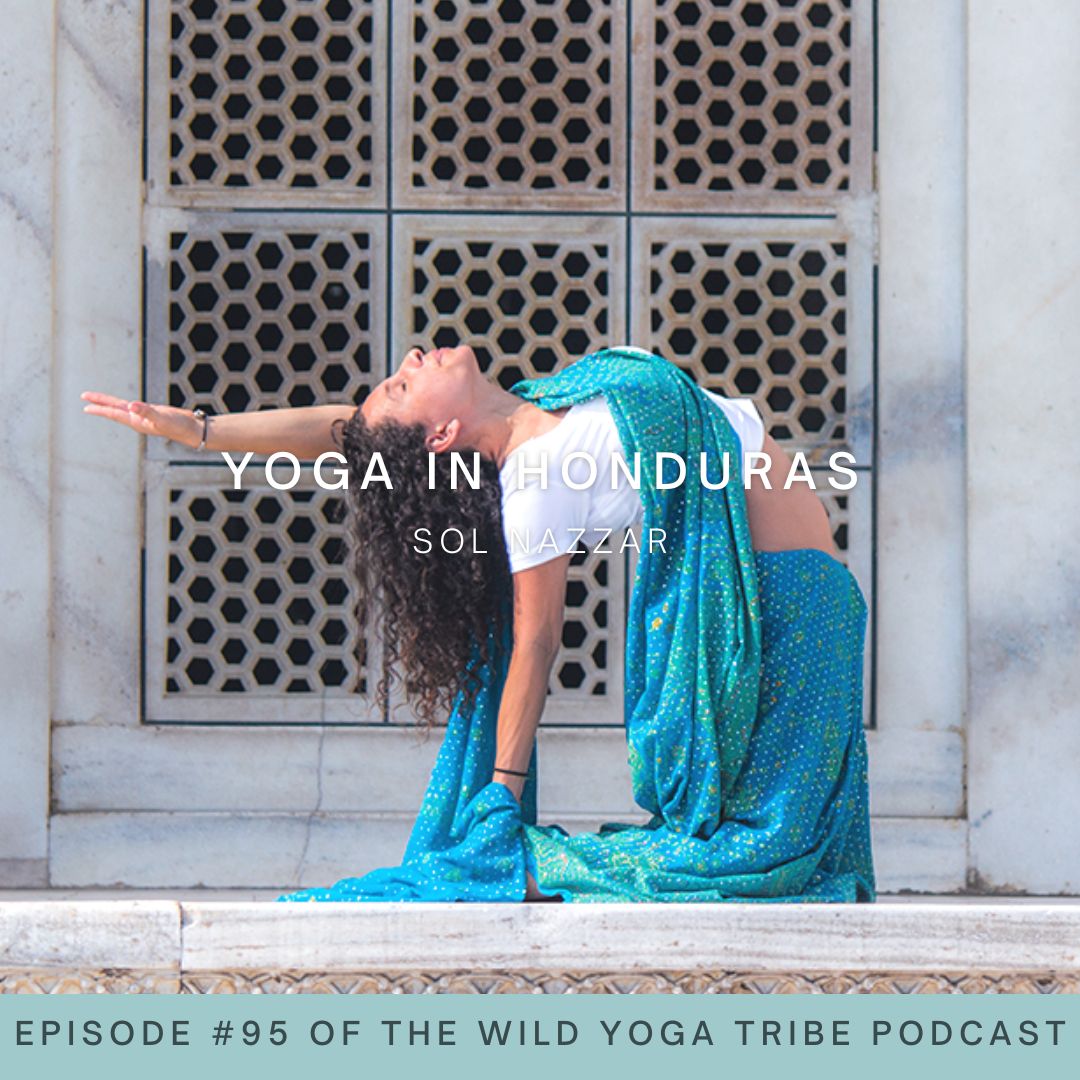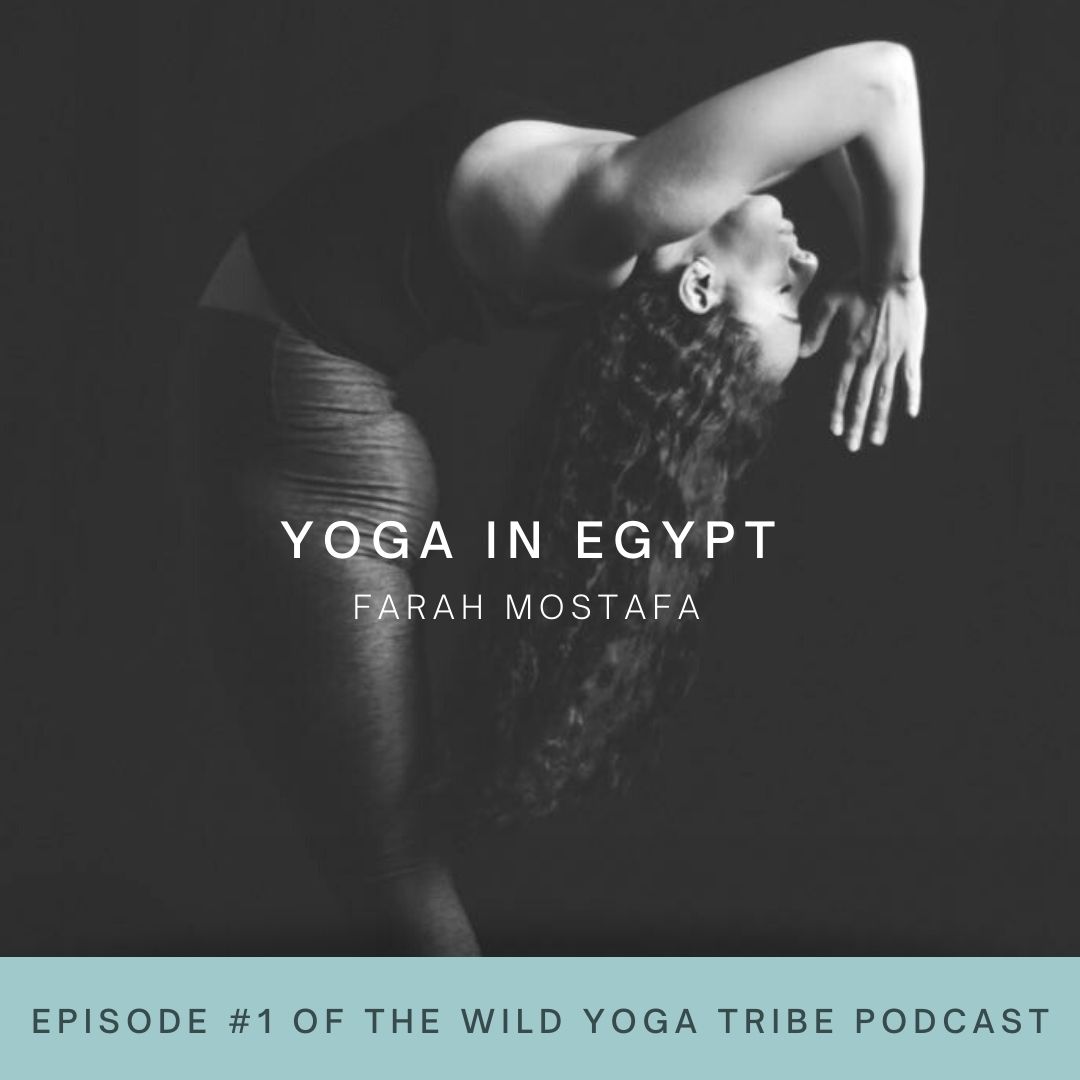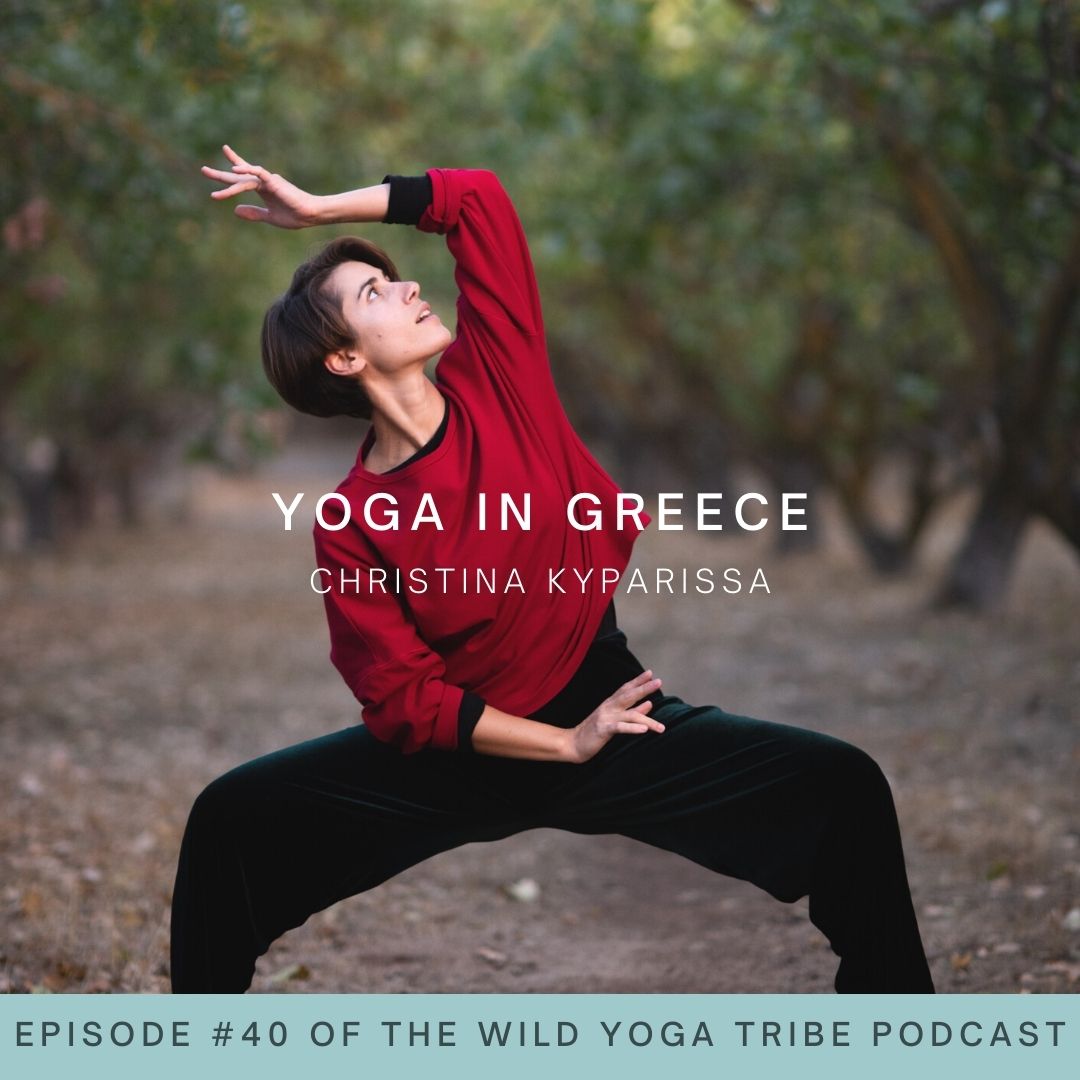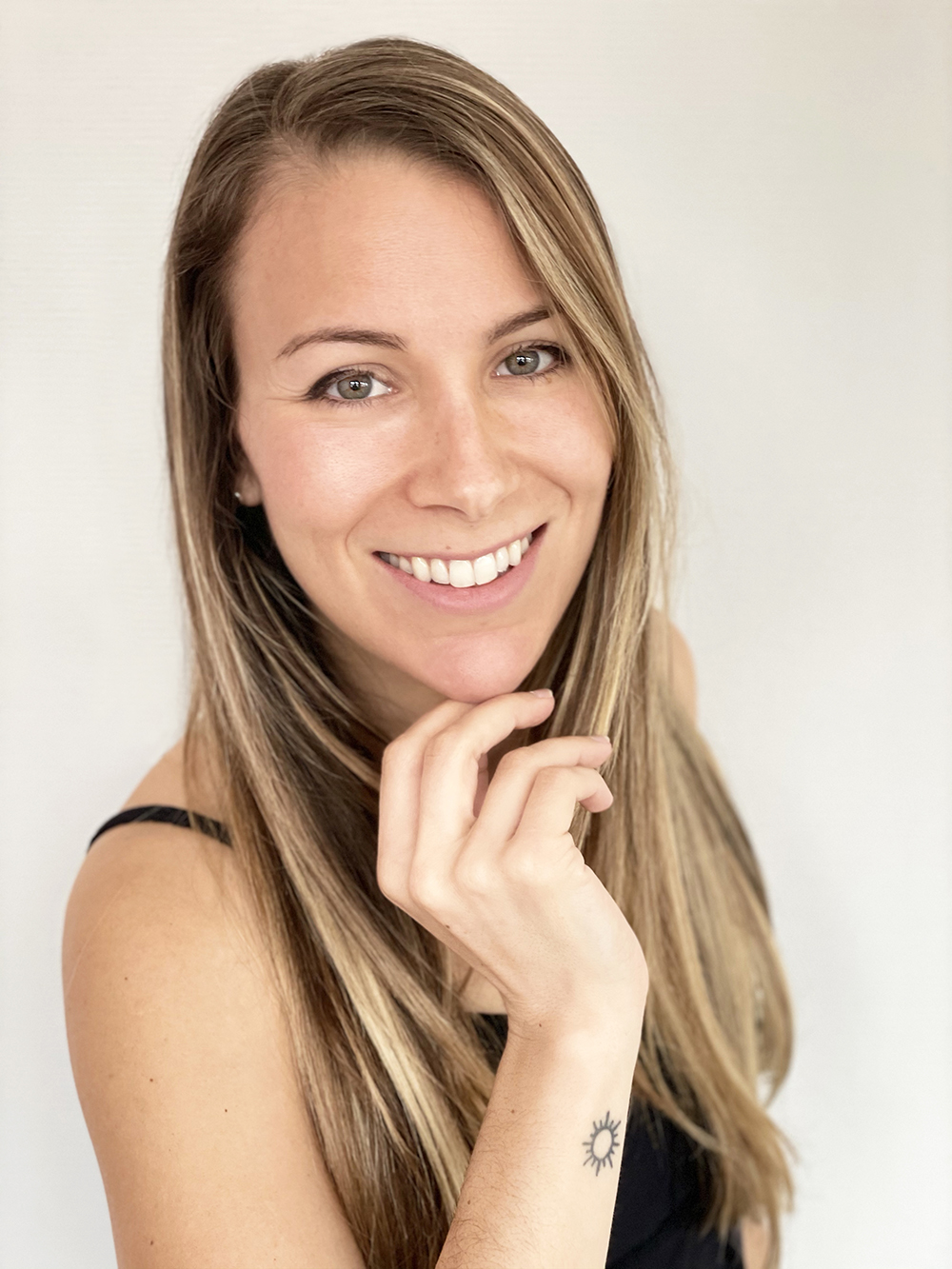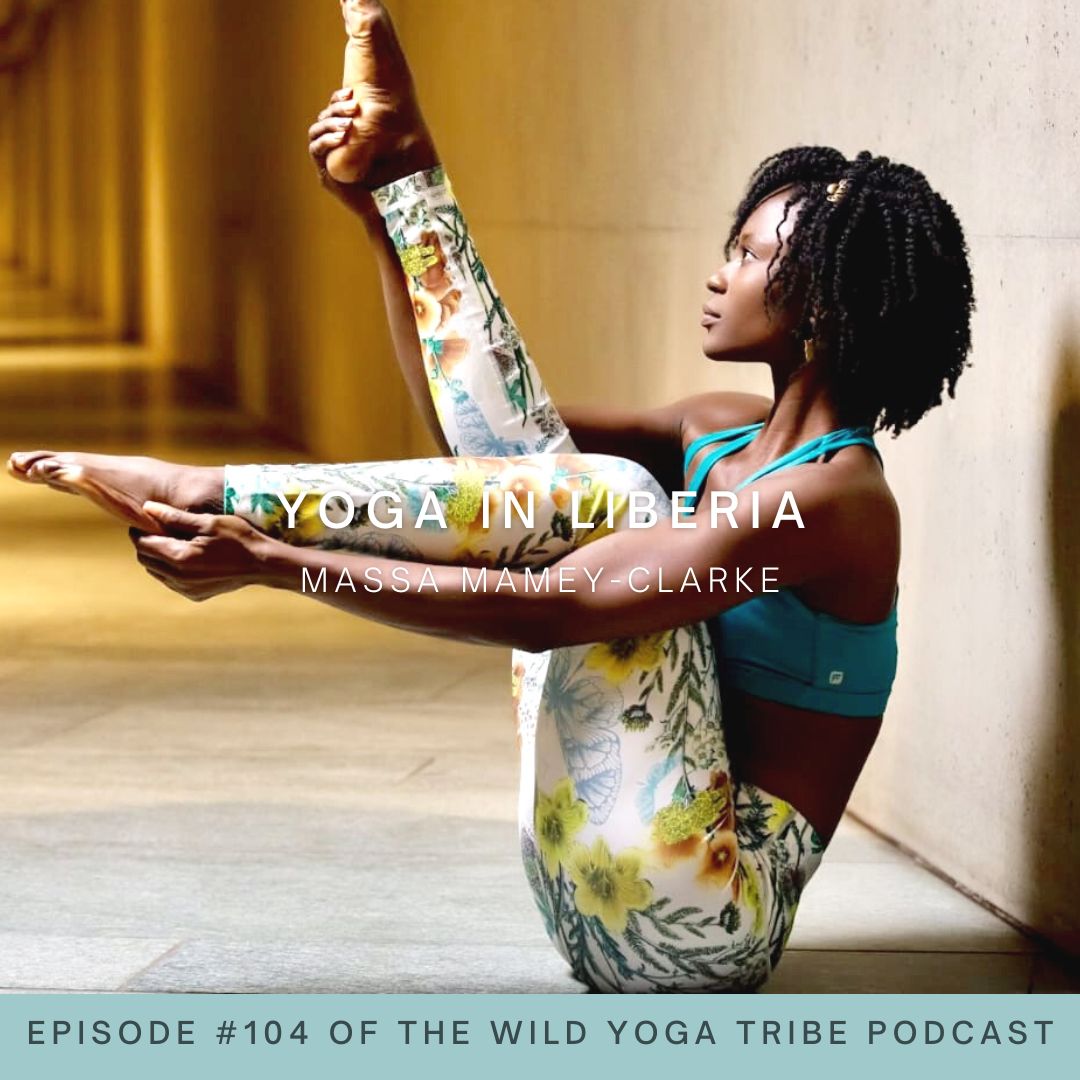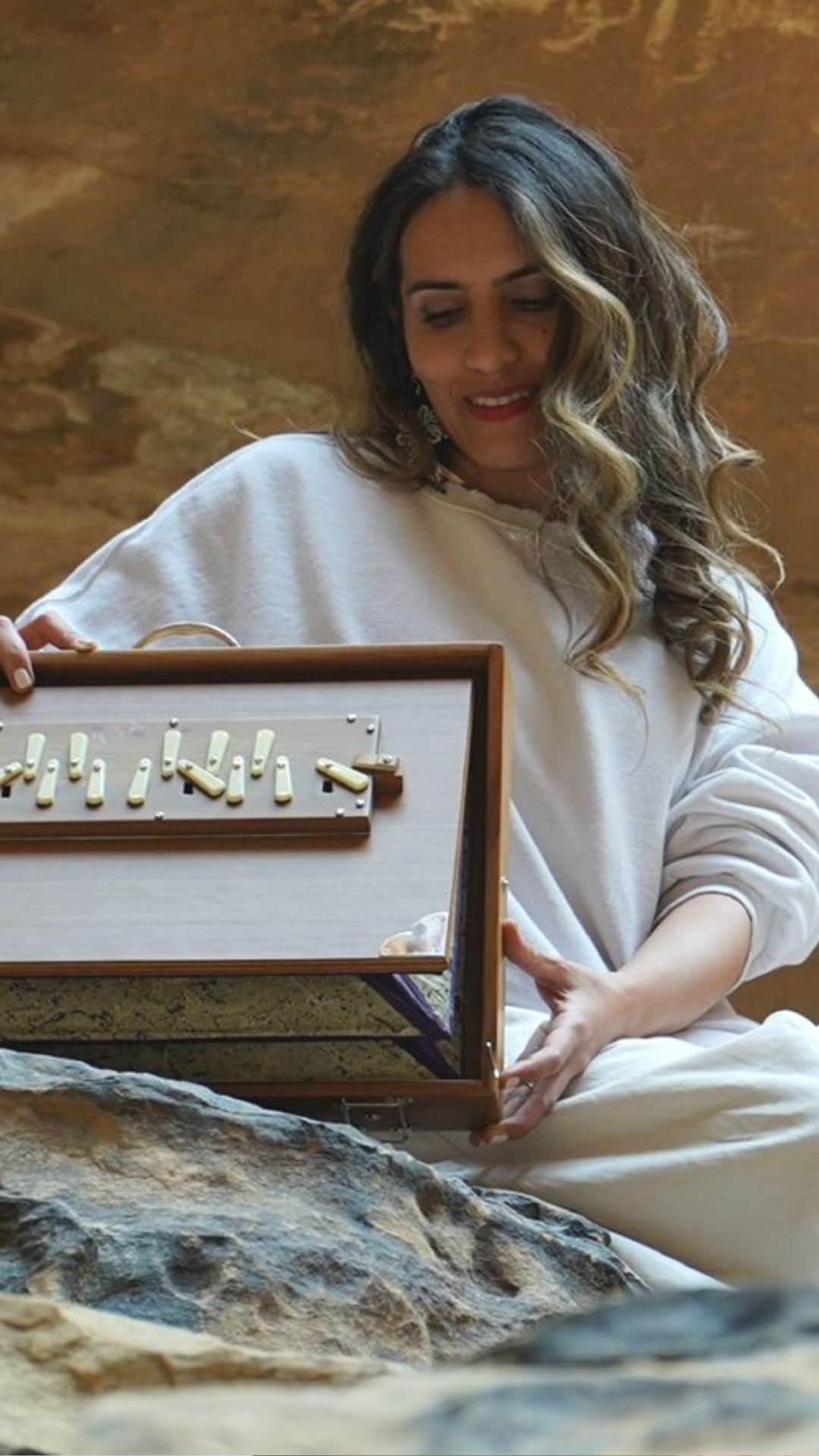
EPISODE #20 – YOGA IN SAUDI ARABIA
Meet Alaa Abonomi
Meet Alaa Abonomi, a yoga teacher from Saudi Arabia who teaches us all about yoga in Saudi Arabia! As a sound healer, Alaa discusses with us the the science and sanctuary of sound. Welcome to yoga in Saudi Arabia!
Wild Yoga Tribe Podcast Episode #20 – The Science and Sanctuary of Sound – Yoga in Saudi Arabia with Alaa Abonomi
Welcome to Episode #20 of the Wild Yoga Tribe Podcast! This week, I welcome Alaa Abanomi onto the show. She is a yoga teacher from Saudi Arabia, who is also a meditation master and sound therapist. She is also the founder of the first official yoga studio in Saudi Arabia! She continues to work with the Saudi Arabia government to curate, plan, and put on events in the health and wellness space.
My conversation with Alaa Abanomi was so informative and truly beautiful. I hope that this conversation made you curious about sound therapy and using sound to elicit transformation, especially altering brain waves! We talked about yoga in Saudi Arabia being supported and encouraged by the government— how amazing is that? We also talked about sound sanctuaries, sound diets, silence being the language of the soul, and how yoga and sound therapy are connected.
If you’re looking to tune into a podcast that is marries the science with the philosophy of sound therapy and the path of yoga, then this is the conversation for you.
Tell me more about Alaa Abanomi
Alaa Abanomi has over 15 years of experience in yoga, functional movement, meditation, retreats, sound therapy and healing, breathwork, Ayurveda, and other practices. In 2014, she co-founded the first dedicated yoga and wellbeing center (Sukoun) in Saudi Arabia that was a an important refuge in Riyadh and has also hosted several renowned international speakers including Deepak Chopra and Max Strom. Most recently, Alaa founded ‘Emtinan,’ a wellbeing consulting and event management company which curates and runs wellness retreats, activations, and spaces.
She holds a BSBA from the University of Denver and is an internationally certified yoga and meditation master, as well as Sound Therapist. She has also completed 5,000+ hours of training across USA, UK, Europe, Asia, and the Middle East. Alaa is based out of her home city of Riyadh, Saudi Arabia.
What to expect in the Yoga In Saudi Arabia episode of the Wild Yoga Tribe Podcast
Alaa Abonomi feels like she found yoga the way that so many other people did— she had a corporate job and was experiencing burnout. She needed a change. She fell in love with yoga and while there wasn’t a yoga center or studio available to her, as yoga wasn’t mainstream yet, she felt called to create a space for others to find yoga. She hosted yoga classes first in her home, then in a random building her father owned, and then she finally was able to open her yoga studio in 2014— the first yoga studio in Saudi Arabia.
“People came in for the stretch and they leave with a lot more— something just happens.” Alaa’s classes were packed, her community fell in love with yoga just like she did. “They have the practice and they ask: ‘What happened? I feel so clear.’ The practice speaks for itself. As long as the intention is there, and the way you’re offering is intelligent, I think the energy shines through how you present anything.”
Of course, Alaa and I took a deep dive into the world of sound healing and sound therapy. We talked about the science behind why sound therapy is an effective mode of transformation and healing, as “vibrations are what we are.” There is scientific proof and visceral proof to the efficacy of sound healing. As Alaa says, “Sound therapy is all about the contrast of sound and silence. You really need to be able to listen to silence. Silence is the language of the soul. It’s where the real healing happens.”
Now, Alaa has founded Emtinan a wellbeing consulting and event management company in Saudi Arabia that organizes events with integrity, carefully curated to create transformational and healing experiences. Emtinan means gratitude, as the energy of gratitude is what moves them to do what they do! Their mantra is: “A grateful heart is a magnet is miracles.”
For the skimmers – What’s in the Saudi Arabia episode?
- What is sound healing?
- The science of sound
- Silence as a sanctuary
- Taking a sound diet
- The Saudi government’s support of yoga
Thank you so much for tuning in the Yoga in Saudi Arabia episode of the Wild Yoga Tribe Podcast with Alaa. I hope you found it as compelling as I did!
Favorite Quote From Alaa Abanomi
“Sound therapy is all about the contrast of sound and silence. You really need to be able to listen to silence. Silence is the language of the soul. It’s where the real healing happens.”
What’s in the Yoga in Saudi Arabia episode?
Feel like skimming?
What is sound healing?
The science of sound
Silence as a sanctuary
Taking a sound diet
The Saudi government’s support of yoga
References and Resources:
The Hidden Messages in Water by Masaru Emoto
Healing at the Speed of Sound by Don Campbell
Richie Bostock – The Breath Guy
Connect with Alaa Abonomi
https://thesaudialchemist.com/
IG: @thesaudialchemist @emtinan.sa
Want more?
https://wildyogatribe.com/thepodcast/
Everything you need is just one click away! Check out all the resources here: https://linktr.ee/wildyogatribe
JOIN ME FOR LIVE-STREAMED YOGA CLASSES!
PODCAST TRANSCRIPTION
Read + Reflect + Respond
Wild Yoga Tribe Podcast Episode #20 – The Science and Sanctuary of Sound – Yoga in Saudi Arabia with Alaa Abonomi
[00:00:00] Lily Allen-Duenas: Welcome. Welcome. Welcome to the Wild Yoga Tribe podcast. I’m your host, Lily Allen-Duenas. Together we’ll talk about the world of yoga and we’ll talk to people from around the world. Join us for authentic conversations about the global yoga ecosystem and we’ll cover yoga philosophies and methodologies along the way. Inhale. Exhale. We’re about to dive in.
[00:00:39] Namaste family. Thank you so much for tuning in today to this episode of the Wild Yoga Tribe podcast. Today, I’m joined by Alaa Abonomi. She is from Saudi Arabia from Riyadh and I am so excited to welcome her onto the show. So Alaa has over 15 years of experience in yoga, functional movement, [00:01:00] meditation, yoga retreats, sound therapy, healing, breathwork ayurveda and other practices. In 2014, she actually co-founded the very first dedicated yoga and wellbeing center in Saudi Arabia.
[00:01:14] It was called Sucoon. It was a really important refuge for people in Riyadh and also hosted several renowned international speakers. We’re talking about Deepak Chopra and Max Strom from here. Wow. So most recently Alaa founded Emtinan. Emtinan is a wellbeing consulting and event management company, which cures and runs wellness, retreats, activations, and spaces.
[00:01:43] She holds a BSBA from the University of Denver back in the U.S. and is an internationally certified yoga and meditation master as well as a sound therapist. She has also completed over 5,000 hours of [00:02:00] training across the USA, UK, Europe, Asia, and the Middle East. Alaa is now based out of her home city of Riyadh in Saudi Arabia.
[00:02:09] So please join me and let’s welcome Alaa on to the show today. Thank you so much Alaa for being here.
[00:02:16] Alaa Abonomi: Thank you for having me, Lily. That’s a very humbling intro. I feel very grateful for that. So thank you for having me today.
[00:02:23] Lily Allen-Duenas: Oh, absolutely. It’s really my joy. I am so excited to dive into so many elements of what you’ve done and what you’re doing.
[00:02:30] I feel like I’m nervous. I want to have a three hour conversation with you, so I’ll do my best to keep it to our hour. So just for starters, could you tell us how you were first introduced to the path of yoga?
Alaa got introduced to the path of yoga
[00:02:58] Alaa Abonomi: I was going through some kind of [00:03:00] a, like a crisis if you will. I used to be an investment banker and I suffered from extreme burnout and I needed something to like, just help me get back into some kind of balance. So it started in that way and it was just for myself, like in a way just to help me personally in my life.
[00:03:18] And I never dreamed that it would take the shape that it did. And it’s just been an incredible journey since.
[00:03:32] And it’s just this big ocean of knowledge and wealth of information. And as it’s an ancient system and it’s only, not only tied to one area in the world, like you just, it’s like a thread that you keep pulling and it’s like a big ocean of knowledge. So yeah. Then it turned into some kind of a career and that’s how I’m here today.
[00:03:50] Lily Allen-Duenas: What was it like opening the first yoga studio in Saudi Arabia?[00:04:00]
Opening the first yoga studio in Saudi Arabia
[00:04:02] Alaa Abonomi: It’s out of my home and then the space that I just
[00:04:05] But thinking of creating some kind of a public space and at the time you will go wasn’t mainstream, it was fringe and it was a little bit weird. We felt like we had a way to.
[00:04:24] We put it in the framework of well-being and just arrive at the benefits that are suitable for our kind of culture. And we teamed up with a physiotherapy center to open the first public space that welcomed people to all kinds of yoga and wellbeing classes.
[00:04:49] It faced some challenges in terms of people not understanding what it was like, so we had to educate them. And once we got a few people through the door that was because of the [00:05:00] word of mouth, because yoga is something that it really gives back, and it’s universal. And when they understand that.
[00:05:07] It really has this kind of benefit to health and wellbeing and how it impacts our state of mind and our sense of peace and sense of self and our relationships and our productivity. Like it just kept growing internally like that, studios opening up and I believe so this was maybe in 2014, 15.
[00:05:35] having a yoga studio as a legal entity. So no longer would you have, tied to another function, like a physiotherapy or a hospital or something like that. So it started becoming recognized on its own, right? As an entity and to this day, this is what we have. So you’re able to go and get yourself a license to a yoga studio.
[00:05:52] And there’s a lot of promotion within the government here for it now. Yeah, I’m really grateful for that.
[00:05:58] Lily Allen-Duenas: Wow. Did you just say, Alaa, that there’s [00:06:00] a promotion in the government to open a yoga studio?
A promotion in the government to open a yoga studio
[00:06:01] Alaa Abonomi: Yes. And they’re pushing for wellbeing events.
[00:06:05] In the country. Wellbeing is like a center stage. Yeah, we’re doing something now in a beautiful location called Anerla with this company that I have in Emtinan and we were running. We are doing it now and we’ve done it before. Actually in February we had a a full season. So 60 days where we were funded by the government to produce and offer wellbeing activities for visitors.
[00:06:28] And it was marketed by the government that was on their websites specifically it was the Royal commission of Alerva and it was just beautiful to have that kind of support and attention. Yeah. There’s a lot of stuff they’re doing. It’s not just only with us. I can see it across the board.
[00:06:41] Wellbeing is center stage.
[00:06:50] how that works, but I do know that that entity exists.
[00:06:57] Lily Allen-Duenas: I had no idea that yoga could join the Olympics. I think that [00:07:00] seems almost counterintuitive to me because if it’s going to be like, who can do the deepest backbends or if it’s going to be competitive in some way, it just, wow. I can’t really wrap my mind around it.
[00:07:18] Alaa Abonomi: Moving away more from the esoteric and the more deeper stuff. So they want you to feel the physical benefits and then you figure out the rest of the stuff on your own.
[00:07:35] We need practice. Not a lot has to be said about it, but I do agree. Yeah. Having it at the Olympics is a bit because yeah, it shouldn’t be something that you’re striving for. Physical perfection or anything like that. It’s an internal practice. I do agree with […].
[00:07:50] Lily Allen-Duenas: Yeah. And so just to touch on it very lightly.
[00:07:53] Do you feel like your culture, your community is interested in the spiritual aspects or do you think [00:08:00] it’s just very physical still?
Your community is interested in spiritual aspects
[00:08:02] Alaa Abonomi: Very much no, no. You have different kinds of people just like in any place in the world, but I know, I do know that yoga has this effect on people. They come in for the stretch and they leave with a lot more like something happened.
[00:08:13] It’s just different and people are in different stages in their lives. Yeah, so I can’t say it’s specific to my culture or specific people. I think there’s a lot of variables that go into answering that question. I can specify.
[00:08:28] Lily Allen-Duenas: Totally fair. I understand there’s a million variables, a million different types of people.
[00:08:32] It’s going to be the answer for every country completely, but I appreciate that broad brush stroke answer that you do see people really starting to, come with maybe more questions for you or do some seeking on the spiritual side or on more of those subtler levels, not just the physical.
[00:08:50] So that’s just exciting to hear, I think.
[00:08:52] Alaa Abonomi: Yeah and they usually do come so they have the practice and then they ask what happened there? I feel so clear. I feel so present and then you can explain to them, [00:09:00] and I think this is a very good approach to be minimal in the way that you, what you offer, because the practice really does speak for itself.
[00:09:07] Just as long as the intention is there. And the way your offering is intelligent, simple enough, I think the energy shines through that, the way you present that. There’s not always a need to go so deep in what we say, it’s more about what we do and our presence, and the energy.
[00:09:23] Lily Allen-Duenas: I appreciate that. And I agree that sometimes if you can leave things unsaid so that they can discover for themselves, like we’re our own best teacher, there’s no simpler way to put that, that I think with our inner investigation and inner awareness and all that stuff, that is a huge gift of yoga.
[00:09:39] To talk to you more about sound therapy. You’re the first sound therapist I’ve had on the show. And I would love to dive into it a little bit more. So just in case our listeners are really unfamiliar with the topic. Can we just define what sound therapy is a little bit?
Definition of sound therapy
[00:09:55] Alaa Abonomi: All right, this is very close to my heart.
[00:09:57] I started with yoga in my [00:10:00] wellbeing journey, but I think earlier on as a child that’s music that really got my heart. And so I found a way to combine the two and what it means to me, if I call it sound therapy because. There is a therapeutic effect of sound.
[00:10:14] And we can all agree on this. When you hear beautiful music, it’s composed in a specific way. And when you hit, when something is harmonious versus when something’s dissonant and vibrations are what we are essentially, if you ask Nicola Tesla or a quantum physicist, they’ll tell you that it’s wave and particle and then there’s space in between.
[00:10:33] Instead it’s just elegant. And this is the theory behind what sound therapy is or sound healing if you call it that is that it’s just elegant to treat vibration with vibration. So if your vibration, it’s elegant than to treat vibration with vibration. So if there’s an imbalance in your vibration or the frequency of your body, get a stronger harmonious frequency that can help.
[00:10:54] Put it back into balance and it’s natural. Children, babies, they [00:11:00] respond to music and they dance, we all feel it. Yeah, this is just an essence. How will you sound to elicit transformation? We can train our brains, we can change the frequencies of ourselves, of our organs.
[00:11:13] We can elicit and release emotions. The most important aspect of sound therapy for me is changing brain states. Maybe right now we’re in focus and we’re having this discussion on this call and we’re focused. So maybe our brain waves are in beta or high beta or something like that.
[00:11:31] When you’re more relaxed, you move into alpha or maybe when you’re about to sleep or you’re daydreaming or you’re dreaming you’re into theta. And then when you’re in very deep sleep, and this is when your body regenerates and your tissues regenerate. This is when you’re in Delta and we can actually elicit or change your brain state without you doing anything.
[00:11:54] And this is a little bit of a difference between yoga and sound therapies. And in sound therapy, people don’t have to make any effort at [00:12:00] all. They just lie there and they allow the vibrations to bath in them. That’s why they say it’s a sound bath because literally you’re bathed in the vibrations and then you don’t have to do anything.
[00:12:10] So it’s like taking an elevator versus when you’re meditating or you’re practicing yoga or something like that. Like you’re taking the stairs. And they both get you into the same place. Like you can get into a flow state. But this is the lazy way. And that’s the more effortful way.
[00:12:25] And there’s of course better benefits to both. But I like combining them too, because that’s the ultra powerful.
[00:12:31] Lily Allen-Duenas: That was a great introduction. To sound therapy. My question is if people are like, okay, I get it. Like music affects me. I definitely can feel, my mood can change because of the song that’s on the radio or I get that, I can hum.
[00:12:46] And then I can just make myself feel better just by humming. How do you think that, how would you explain it to someone? Maybe some questions about how does it actually alters the brain or I know you mentioned Nicholas Tesla, the wave [00:13:00] and the particle and the space in between, but is there anything either, personal or scientific or anything that you offer to people who are skeptical?
Offer anything to people who are skeptical about the wave
[00:13:08] Alaa Abonomi: So I give them an example of a pendulum. For instance I don’t know if you’ve ever done this in your science class when you were in high school. When you were in school, if you start a pendulum and you put in four or five of them and you start one, and then you start the other one, you start the third one, they all started at different times in the beginning, they’re all swinging at different rates.
[00:13:32] And then maybe if you come back in a few and a minute or so, they start all moving in this. Same motion. And how has that been explained because the one in train, the other one in the other one and train the other, do you know what train means? Is to pull something into your frequency and this is something physical that people can see with their own eyes.
[00:13:52] So that’s what happens to your frequency? The arraign frequency is literally they get pulled into the frequency of the higher frequency [00:14:00] and they start vibrating at the same. At the same rate. Another one is that our bodies are 80% water and a vibration moves through water. If I put a glass full of water in front of a loudspeaker, if you were in a concert or something, and you had a, really one of those really big speakers and you put water in front of it, what happens to it?
[00:14:22] It vibrates. So it moves. So the actual vibrations can move the water in your body. So each cell has 80% water and that can vibrate. So it’s like you’re getting an internal massage. This is also a very nice benefit from the sound buses, but there’s also physical sensation. Nobody is physically touching you, but the waves are going into places that even the best masseuse can get into.
[00:14:44] I can see your liver and your kidneys, and it can shake literally any water in there. And maybe if there’s any tension in your muscles and your cells, it releases it. And often you find people after a sound bath and they feel this detoxifying feeling like they want to go to the [00:15:00] toilet a lot and they want to drink a lot of water.
[00:15:02] They find they feel a release. Sometimes I have people that start their cycles right after a sound bath. There is scientific visceral physical evidence. And if you research it, it’s there. There’s also a science called psychotics where you see the effects, how sound can change matter or actually move matter and it moves.
[00:15:21] And when you have a sound that’s harmonious, the shapes and the patterns are harmonious. And when it’s dissonant, it’s not. I think it was r Dr. Emoto. Let’s just call him Dr. Emoto. And he did research on the effects of vibration on a water, and if you froze it and you crystallized it, it would form a harmonious versus disharmonious shape based on what’s a sound and what words would be an intention you were using on the water.
[00:15:50] So that’s really interesting. There’s a lot of stuff out there. And I know even if you think of something like an ultrasound, what is that? How can it know what’s inside your body? [00:16:00] It can see things. Sound is amazing. It’s been there since the Dawn of time. And I think in most religions and theories about how the world began.
[00:16:10] It’s always been sounds, the big bang or a first, then there was the word and then the word was with God, there’s a sound. And then the world was created. So this is something like, if we just dig, it’s just a very intricate part of our lives. And sometimes it’s just common sense.
[00:16:27] The science is there when we look at it, but it’s also just really common sense. And I have not had anybody in a soundbar that doubted that there wasn’t an effect. There is an effect. If the session is done in a way that of course there’s specific ways to do things, it’s not like haphazard, you have to be trained.
[00:16:46] You have to understand how to use different frequencies. Even in music a beautiful song that really affects you, has a dissonance, and then it has. And the same way in a sound bath, there’s a way to generate the frequencies. There are [00:17:00] specific notes and things like that to use to give specific effects.
[00:17:04] So it’s like this whole thing. And I really, I can, I have books and books about theories and research and as well, we can talk about this for a very long time, but yes, there are scientific things and I think just. Entrainment for me is a big thing and the physical effect of vibration on water.
[00:17:25] That’s another very big thing. So this is usually what I mentioned to people in the beginning of a session. And it convinces them.
[00:17:32] Lily Allen-Duenas: Absolutely. I read the book, the hidden messages in water by the author that you were referred to. And I think I read that maybe 10 years ago, my mom was reading it and she passed it on to me.
[00:17:44] It blew my mind. It just lifts. I couldn’t even, I’m stuttering right now, but I felt oh my gosh, water is so sensitive to sound. And just by, as you said, these ice crystals, it could be they’re beautiful, or it could be just gloppy and mushy. [00:18:00] And really disharmonious just based on the sound that they were exposed to even kind words, as you said, kind words versus negative words and so much of our body is water.
[00:18:10] So that convinced me just reading that book. If any of my listeners are interested, I’ll link it in the show notes, because it’s a short read, it’s maybe a hundred pages or something, but it’s really well worth it.
[00:18:21] Alaa Abonomi: There was one thing I should, that I’m just, as you were talking I remembered also about rhythm.
[00:18:26] Rhythm is very important to, to the brain and to human beings. So even like using a gong and sound therapy, it’s a percussion instrument and all human beings respond to rhythm because our heartbeat is a rhythm and if it’s something speeds up, our heartbeat speeds up. It also trains the brain in that way.
[00:18:47] So that was something else. And usually when I talk about the drum in any session, people get it because there is not one culture in the world that doesn’t have a drum or, and uses it somehow, to celebrate or to notify [00:19:00] or to dance, to. To arrange there’s a lot of uses for the drum.
[00:19:05] Yeah. Sorry. You were just saying that. I forgot that the drum is a big thing in sound.
[00:19:09] Lily Allen-Duenas: So Alaa do you think it’s okay to do a sound therapy session on zoom? Would that actually work?
Sound therapy sessions on Zoom
[00:19:15] Alaa Abonomi: So I’ve seen people do that and I’ve actually tried it. It’s not as effective as being in the room. Number one.
[00:19:22] The sessions are about holding space and when you’re with somebody in real life there’s no substitute for that. Like a human presence. That’s the first thing. Second thing, especially with a gong and like some of the singing balls there’s something there, the tones they produce they’re called feeling tones because you can really feel them resonate in your body.
[00:19:42] And online something gets distorted. You’re not getting like the actual frequency particle things that happened when you’re in the room. And I’ve had people say this who have tried both like online versus real life, especially with a gong. Also, it’s very difficult to capture the overtones [00:20:00] because the gongs do not have one sound.
[00:20:02] They have like hundreds of sounds and they’re called overtones. And these are very hard to record. And I’ve even seen people with really spectacular setups and things like that. Still not the same as a real, sound bath but the most important thing is a holding space and the human presence.
[00:20:18] I think this is the number one thing. People actually the most healing thing is being there like a loving presence for somebody. So I hope that answers your question.
[00:20:28] Lily Allen-Duenas: Yes. Thank you. It does. I feel the same way about yoga in some ways online yoga, isn’t quite a substitute for in-person yoga classes and Asana practices, meditation pranayama.
[00:20:39] But it still is a, it’s a substitute that does not have to function sometimes in space, like in COVID times. But I do think in-person is always better. You got me thinking too Alaa. Do you generally advise people to be really careful about what, they, what music they listen to or what type of movies they’re watching, because there’s so much, [00:21:00] music and cinematic noise and stuff in movies?
Be careful of what music to listen to and movies to watch
[00:21:03] Alaa Abonomi: I do actually, that’s such a good thing to bring up. I think sound affects us. Sound affects us. And if you can imagine yourself living in an apartment and you have construction next to you, all day long. Imagine how your mood would be and how you would be feeling and your stress levels versus if you were surrounded by trees and birds and things like that.
[00:21:25] So sound affects our nervous system. It affects us. And I do recommend that having a healthy sound, I call it a sound diet, and it’s from this book that I really love, sorry, healing and the speed of sound healing with the speed of sound by Don Campbell, I believe. And that’s a really great introduction to this kind of modality and to understand how sound affects us.
[00:21:46] It’s a really wonderful book. So yeah what you listen to affects you and what do you listen to when you’re working out versus when you’re sitting and reading or yeah. It affects you totally. So yeah, you should be mindful about what you’re listening to, and I think it’s [00:22:00] really important.
[00:22:01] To pay attention to silence. And this was something else that I would like to mention about sound therapy. It’s all about the contrast between the sound and the silence, because in the end this is where the magic happens because when you have that contrast, you will really be able to listen to the silence and hear in silence.
[00:22:20] This is the language of our soul. It’s where real healing happens, where you can really touch your source. Yeah, what you’ve listened to is important and spending time as well in silence is very important, is even more important.
[00:22:32] Lily Allen-Duenas: I’m so glad you brought up that you call it a sound diet because I think so much that when we think about a diet, everyone always goes to food.
[00:22:42] It’s probably just synonymous with a diet as a food diet, but we have more than one different way of absorbing. We’ve more than one different sense organ. We don’t just have the mouse. We have the eyes, we have the ears, we have the nose. There’s so many different modes of consumption that I think we have to be mindful [00:23:00] of our path as practitioners or as spiritual beings or just someone who wants to grow or be more self-aware.
[00:23:08] I really got amped up. When you mentioned a sound diet.
[00:23:13] Alaa Abonomi: It’s something really cool to do, if you, maybe after this conversation, maybe next week, do an exercise every day, where you sit in a room in your house and notice the sounds that are in your house. Maybe it’s in your living room, maybe it’s the AC or the home of the fridge or whatever.
[00:23:29] Notice what you’ve been living with and not aware of. And then on the next day, maybe listen to a piece of music that makes you feel really good. Some maybe classical music or something like this and the next day, try and notice how your mood is on those days. When you’re more aware of your surroundings and what you’re listening to.
[00:23:48] Yeah it’s a way of anchoring as well to the present. It’s a way of understanding yourself more. It’s mindfulness. And yeah, it sounds like an input. So try it for a week and be more mindful [00:24:00] of what you are putting in your ears or what you’re allowing into your sense of hearing or listening.
[00:24:05] Lily Allen-Duenas: Absolutely, because I think we are always seeking escape constantly. Like anything, any moment of silence where we grab our phones, scroll through Instagram or anything of silence. We got to do the dishes. Oh, we should just put on a song. Let’s do it to music. As a society, as a culture, as a world, I feel like right now we’re running away from silence.
[00:24:26] Alaa Abonomi: Yes. And why do you know why?
[00:24:29] Lily Allen-Duenas: I would love for you to tell me.
[00:24:32] Alaa Abonomi: Well, because it’s just like when you get, so when you get silenced, you can really see and we’re afraid of what we’re going to see. We’re afraid of our thoughts. We’re afraid of being alone with their thoughts, because we think that they can overwhelm us and overtake us because we have a misidentification of who we are.
[00:24:50] And through silence. And when you get still, when you get silent, this is a really good opportunity to really reposition yourself in the position of a witness, [00:25:00] rather than at an object that can be touched by the thought the overwhelming thoughts, and this is where our true power is that when we realized that we can observe, we can just observe and we can allow things to pass.
[00:25:15] And then here we are, here’s where we really try to start accessing pieces. And then it becomes, silence becomes a refuge. Stillness becomes a refuge. It doesn’t become something we’re afraid of.
[00:25:25] Lily Allen-Duenas: I agree. And that’s also my belief as well, that people are scared to look inward. They’re very scared of what they’ll see of their unhappiness, suffering, discomfort, frustration.
[00:25:35] If they’re facing themselves, I think they’ll fear they’ll be flooded with negativity.
[00:25:42] Alaa Abonomi: Yes. Yeah. And the thing is that what they’ll realize is actually, if they sit they’ll see that it’s all just not real and they can actually deal with it because they can take a look, they’ll find a place that they can truly anchor in and then they can take the actions that.
[00:25:58] Can change the things [00:26:00] that they can control and then they can have the clarity and the wisdom and the discernment to see the things that they can’t so that there’s no reason for them to be, having negative thoughts about them in the first place, right.
[00:26:11] Lily Allen-Duenas: Right. No, that’s completely true.
[00:26:13] At this point, Alaa, I would like to ask about how you feel that sound therapy kind of compliments the yoga path, because it’s not one of the eight limbs sound therapy isn’t but how do you feel they compliment?
Sound therapy compliments the yoga path
[00:26:28] Alaa Abonomi: It is actually, I do feel that they’re connected. There is a whole branch of yoga called Nada yoga.
[00:26:35] And it’s about listening to silence and the listening, it’s about deep listening. There, there are books on this as well. I really love the Sufi musician called […]. And he has some beautiful books on this kind of branch called Nada yoga. It’s not that traditional yoga, but really because if you’re looking at what yoga is, it’s about union and about unifying them.
[00:26:58] Why the body, mind, [00:27:00] soul, understanding yourself, all of this stuff. There’s so many different definitions for yoga. But how do they compliment each other? There’s a saying that says the top of the mountain. Has many paths you can go up and the one that’s on the top can see that it can, you can come up through any path and reach the same place.
[00:27:15] They can see all the paths, but you have to take one path so that you can get up faster, and so you can master what you’re doing. There’s a really cool definition for a sound bath and therapy. And that I like is that it’s a deep listening practice. And I think the first step in being able to listen deeply is that you have to become present.
[00:27:39] And I think this is the same in a yoga practice. As you have to be present, you have to feel what’s happening in your body and your breath and things like that. So the door is the same and you’re going to end up at the same place because it’s about becoming a witness to your experience.
[00:27:51] And if yoga is working on moving energy in the body, strengthening the body, aligning the spine and expanding your breath so that you [00:28:00] can arrange your rest so that your mind can be controlled or attained. The sound does something similar, but in different places. So the areas that the yoga doesn’t get to the physical yoga doesn’t get to, or the practices don’t get to that the sound gets to.
[00:28:15] So it’s really nice to do one after the other. Or together and they’re going to the same place. It’s a different language, but they’re going to the same place.
[00:28:24] Lily Allen-Duenas: Yes. As Swami Satchidananda says one truth, many paths. That’s one of my favorite ways to think about it.
[00:28:31] Alaa Abonomi: Yes. Yes. Absolutely.
[00:28:34] Lily Allen-Duenas: Alla, I know that you have this amazing wellness consulting and event management company, Emtinan.
[00:28:41] I would love to hear more about it, about these retreats that you create these activation spaces, and also what really inspired you or made you feel called to create this.
What inspired Alaa to create Emtinan
[00:28:51] Alaa Abonomi: Yeah. So after opening a yoga studio I lost my spark because it became a bit more about managing, but [00:29:00] then the practice itself.
[00:29:01] So I closed it in 2018. And I wanted to explore and have more freedom with my time and not just stick to just yoga. I wanted wellbeing to be because it’s this broad thing. And I wanted to explore more things in different places and travel around. We started with doing some retreats because.
[00:29:22] We do have a big community in Riyadh. And they wanted to have these deeper explorations, not just a class or two or a workshop. They want it to go somewhere and really immerse themselves in a full program where they can come out and feel transformed. And one of the things I really love doing is curating.
[00:29:38] Such things, like finding people that I would like to learn from or benefit from and create the most magnificent experience so that I would want to attend and that other people would want to join me in. So it started like that. And then as we’re doing these things bigger opportunities come along. For instance I don’t know about other bigger, big events and things like [00:30:00] this.
[00:30:00] So it just became, it made sense to create some kind of entity that could umbrella these things and so that we can grow to be able to provide the kind of things that we would want to see, for people. So that’s how it started. It came up right before COVID hit.
[00:30:16] This was the idea was there. And then during COVID like, oh, it became even more apparent that such an entity really needed to exist. And right after we had our quarantine, here’s where the government asked us to treat some kind of event for them in this really beautiful place. What I felt was during quarantine.
[00:30:36] We were stuck to our screens and our eyes needed a break. And since I love sound so much, I, we did, we created this idea that we do, like the sound sanctuary in the middle of the desert, really beautiful. And yeah. And then here, this is when, just when these ideas are coming around, this is when the company really started to pick up.
[00:30:55] And I have a really wonderful team of colleagues and [00:31:00] peers that are interested in believing in this. And we really focus on quality. It’s not a commercial thing at all. We choose what we do very carefully and it has to have a purpose and it has to be authentic and it has to have some kind of.
[00:31:13] Social responsibility aspect where we’re giving back to our community and it has to make that kind of sense, or we don’t do it. Like it’s not at all something. We’re not trying to churn out products or events or things like that. They’re just inspired by what we believe in and what we would like to see, out there for people.
[00:31:30] So Emtinan actually means gratitude. And we chose the name because we were just really grateful to be, to have our practices and to have the disciplines that are we’re benefiting our lives during this difficult time for everybody, in this transitional periods for the whole world and we wanted to give back and what we believe is that the energy of gratitude tumbles us and it gives abundance.
[00:31:55] So when you’re grateful and we have this written on our board, is that a grateful heart is [00:32:00] a magnet for miracles and that’s it. So we’re just saying that the energy of gratitude moves us, and that’s how we start any project that we do.
[00:32:11] Lily Allen-Duenas: It definitely sounds like you’re creating these just gorgeous events with integrity, that you’re carefully curating to create these transformational and healing experiences for people.
[00:32:20] That’s amazing, that is your life’s work.
[00:32:24] Alaa Abonomi: Thank you. We try, we try.
[00:32:26] Lily Allen-Duenas: Absolutely. So if somebody wants to check out your events or your retreats or what’s coming up, what’s a good way to find out what your offerings are?
What are your offerings?
[00:32:34] Alaa Abonomi: Okay. So I have my Publica account, which is the Saudi alchemist’s on Instagram.
[00:32:40] I have a website as well as the saudialchemist.com. And then for this company so you can see our activations and our events and then some more bigger scale stuff. It’s emtinan.com and then we have emtinan.sa on Instagram. And there you’d be able to see what’s coming up.
[00:32:55] We have very nice programming. The next few months we have a [00:33:00] retreat in, this newly opened resort in NOLA called habitus. It’s an international resort. I believe they have one, they have a few, but the main one was in Tulum and it’s a wellbeing resort. It’s the first of its kind in the region, which is awesome.
[00:33:13] And then we have some guests coming. They are amazing at what they do. We have the breath guy Richie Bostok coming in November as well to Riyadh into an arena. And we have a very nice yoga activation happening in an arena. So you can go stay in one of the cool hotels or caravans and go explore the farms and the historical sites.
[00:33:35] It’s just really stunning. But yeah, they can find this in a lot more stuff. That’s coming in the future on our sites, in our Instagram pages. Yeah.
[00:33:42] Lily Allen-Duenas: Wonderful. I will link to all of your offerings and your websites in the show notes, wherever you’re listening to podcasts. Dear listeners, it’ll be there in the show notes as well as on my website, wildyogatribe.com.
[00:33:54] So it’ll be easy to connect with Alla and check out everything she has coming up. Thank you [00:34:00] so much Alaa for joining me today on this episode. I feel like I’ve learned so much and I hope my listeners have as well. It was just a beautiful experience. Thank you.
[00:34:08] Alaa Abonomi: Thank you for having me and thank you for the beautiful work that you do.
[00:34:11] It’s really nice and heartwarming to connect with yogis all over the world. And the fact that you’re doing that, it shows how, there is something that, that unites us all and it, it gives also hope it’s, it’s inspiring. So thank you so much for the work that you do and for having me today.
[00:34:29] Lily Allen-Duenas: Thank you so much Alaa. I really appreciate your kind words. Thank you.
Wild Yoga Tribe Outro
[00:34:36] Lily Allen-Duenas: My conversation with Alaa Abonomi, a yoga teacher from Saudi Arabia who is also a passionate sound therapist, was so informative. And I felt like it was just truly beautiful. I hope that this conversation made you curious about sound therapy and about using sound to elicit transformation, especially altering the brain waves.
[00:34:58] We talked about yoga and Saudi Arabia being supported and encouraged by the government. How amazing is that? And we also talked about sound sanctuaries, sound diets, silence being the language of the soul and how yoga and sound therapy are connected. Thank you so much, dear listener for being with us. Be well.
[00:35:23] Feel like getting a social connection with me and the Wild Yoga Tribe on social media on Facebook, Instagram, and YouTube. Head on over to wildyogatribe.com to tap into some pretty awesome resources and meditate with me on Insight Timer, a free app on Apple and Android devices. And join me for a yoga class on YouTube, jazz up your week and get a bit of yoga in your life.
[00:35:48] Remember to hit subscribe so that you never miss an episode. And if you feel called, please share this episode with someone that you think could benefit from it. Leaving a review would also be so appreciated. [00:36:00] Thank you again, dear listener for being with me, may your day be light and bright. May you be peaceful and happy and led on the right path free of suffering and free of sorrow be well deer one. Be well.
Copyright © 2022 Wild Yoga Tribe LLC. All rights reserved. Transcripts are generated using a combination of speech recognition software and human transcribers, and may contain errors. Kindly check the corresponding audio before quoting in print to ensure accuracy.
The Wild Yoga Tribe, LLC, owns the copyright in and to all content in and transcripts of the Wild Yoga Tribe podcasts, with all rights reserved, including right of publicity.
What’s Okay
You are welcome to share an excerpt from the episode transcript (up to 500 words but not more) in media articles (e.g., The New York Times), in a non-commercial article or blog post (e.g., Elephant Journal), and/or on a personal social media account for non-commercial purposes, provided that you include proper attribution and link back to the podcast URL. For complete transparency and clarity, media outlets with advertising models are also welcome to use excerpts from the transcript per the above.
What’s Not Okay
No one is authorized to copy any portion of the podcast content or use Lily Allen-Duenas’ name, image or likeness for any commercial purpose or use, including without limitation inclusion in any books, e-books, or on a commercial website or social media site (e.g., Instagram, Facebook, etc.) that offers or promotes your or another’s products or services. Of course, media outlets are permitted to use photos of Lily Allen-Duenas from her Media Kit page or can make written requests via email to receive her headshots folder.
